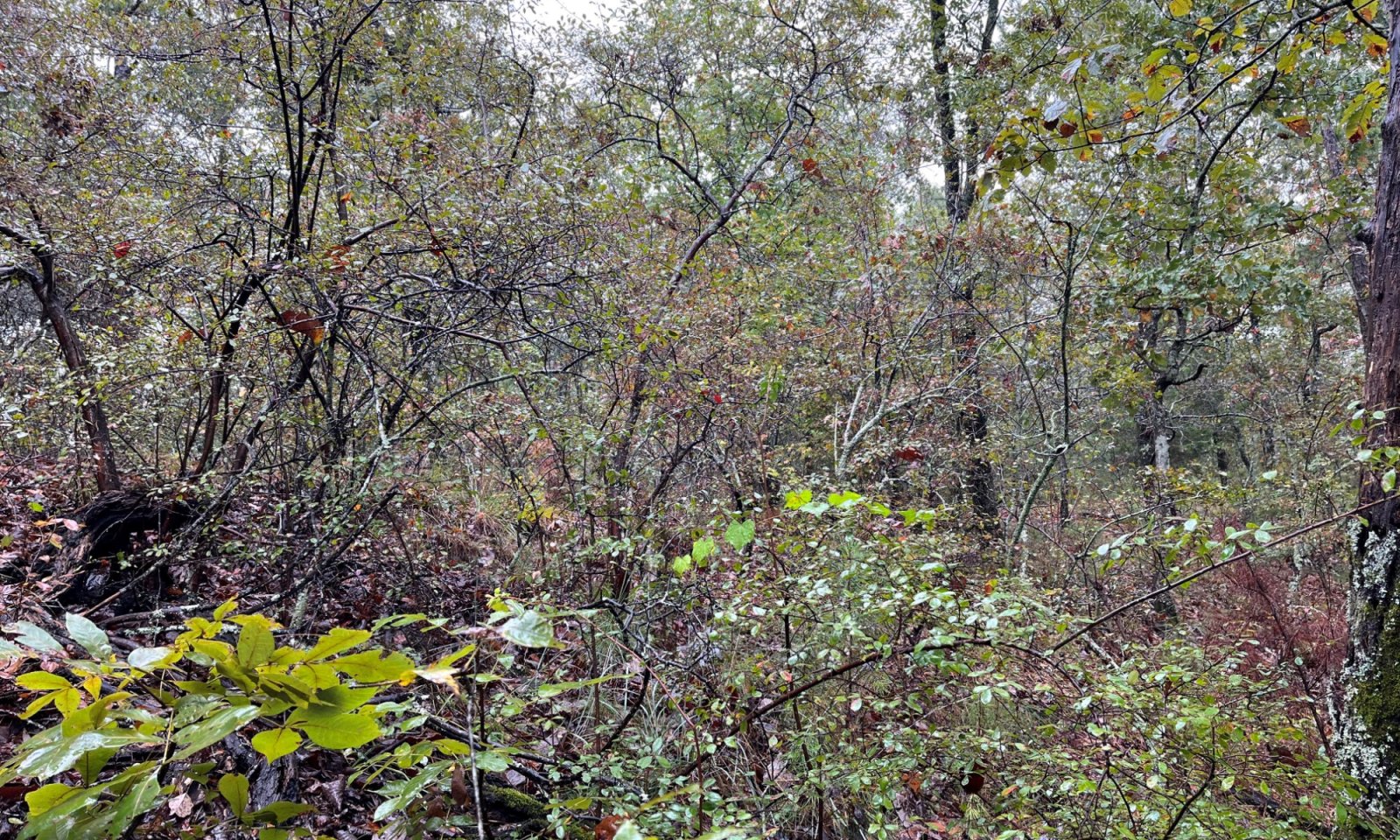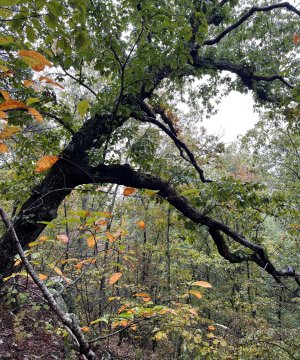
Talladega Upland and Pine Mountain Quartzite Ridges, Dry
Scenario model
Current ecosystem state
Select a state
Management practices/drivers
Select a transition or restoration pathway
-
Transition T1A
Clearcut logging or other large-scale disturbances that cause canopy removal.
More details -
Transition T2A
Long-term natural succession.
More details -
No transition or restoration pathway between the selected states has been described
Target ecosystem state
Select a state
Description
This mature forest state is generally dominated by dry-site oaks, or a mixture of dry-site oaks and pines, with acid-tolerant flora in the understory.
Characteristics and indicators
Stands are uneven-aged with at least some old trees present.
Submodel
Description
This successional phase develops in the wake of clearcut logging, storm-related catastrophic tree mortality, or other large-scale disturbances that have led to canopy removal in the recent past. Which species colonize a particular location in the wake of a disturbance does involve a considerable degree of chance. It also depends a great deal on the type, duration, and magnitude of the disturbance event.
Characteristics and indicators
Plant age distribution is even. Plants exhibit pioneering traits such as rapid growth, early reproduction, and shade-intolerance.
Submodel
Mechanism
The reference state can transition to the secondary succession state through clearcut logging or other large-scale disturbances that cause canopy removal.
Model keys
Briefcase
Add ecological sites and Major Land Resource Areas to your briefcase by clicking on the briefcase (![]() ) icon wherever it occurs. Drag and drop items to reorder. Cookies are used to store briefcase items between browsing sessions. Because of this, the number of items that can be added to your briefcase is limited, and briefcase items added on one device and browser cannot be accessed from another device or browser. Users who do not wish to place cookies on their devices should not use the briefcase tool. Briefcase cookies serve no other purpose than described here and are deleted whenever browsing history is cleared.
) icon wherever it occurs. Drag and drop items to reorder. Cookies are used to store briefcase items between browsing sessions. Because of this, the number of items that can be added to your briefcase is limited, and briefcase items added on one device and browser cannot be accessed from another device or browser. Users who do not wish to place cookies on their devices should not use the briefcase tool. Briefcase cookies serve no other purpose than described here and are deleted whenever browsing history is cleared.
Ecological sites
Major Land Resource Areas
The Ecosystem Dynamics Interpretive Tool is an information system framework developed by the USDA-ARS Jornada Experimental Range, USDA Natural Resources Conservation Service, and New Mexico State University.

